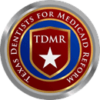 According to the latest online Health Resources & Services Administration statistics, Texas ranks behind California, Arkansas, Missouri, and Florida as the states with the most dental health professional shortage areas (DHPSAs). Texas currently has 265 areas designated as such.
According to the latest online Health Resources & Services Administration statistics, Texas ranks behind California, Arkansas, Missouri, and Florida as the states with the most dental health professional shortage areas (DHPSAs). Texas currently has 265 areas designated as such.
The HRSA identifies regions, populations, or facilities with insufficient dental care providers in the country. Regions with more than 5,000 residents per dentist are considered to have a shortage. A ratio of 1:4,000 may be used in areas with unusually high needs. These designations help prioritize allocating resources and support to areas most needing dental health services.
Impacts 2 million residents
In the agency’s December 2024 report (below), these shortage areas impact approximately 2 million Texas residents, with only 28.99% of the state’s dental care needs met. To address this gap, an estimated 368 additional dental practitioners are required.
The Texas Oral Health Coalition reports that the shortage is particularly pronounced in Texas’s border counties. A study indicates that 79.6% of these counties are designated dental HPSAs, compared to 52.5% of non-border counties. The Texas Oral Health Coalition merged with the Texas Health Institute at the start of 2025.
Increasing Medicaid fees can attract more dentists
This affects dental Medicaid. We need to entice more dentists to the state to address this shortage. Financial strains on dental practices exacerbate this problem due to rising operational costs and stagnant Medicaid reimbursement rates, leading to fewer providers accepting Medicaid patients.
Efforts to enhance Medicaid dental benefits and streamline provider participation are essential to improving oral health outcomes for Texans, especially in underserved regions.


I have my pediatric Dental office in one of those rural areas that is very much in need.
My recertification became reapplication. We are about 96% Medicaid clinic and had to temporarily close our clinic since November 2024. Some of my staff are on unemployment while some are part time hopping for TMHP approval. The process is not encouraging for anyone. I have been in practice since 2001 and may have to close down for being negatively funded. Now running on credit cards and personal finance. Still checking with TMHP daily. My office was not financially viable prior to closing in November. I made 55% less last year . Paying myself 70% less. How then can the state provide for these kids?. I am not alone. Lower compensations. No special considerations in the approval process for temporary status. I pleaded for expedited application process being the only pediatric Dentist in 70 mile radius. I was told that every time corrections are made, it gets the application to the bottom of the line.
Well doctor you have to remember that you are just a greedy dentist. You should be expected to work for sub-par fees while paying 40% more in overhead over the last 15 years. What you are dealing with is what happens when the government runs the show. Inefficient, horrible customer service. The term “customer service” is totally foreign to these government workers. THE ENTIRE SYSTEM IS AN ABSOLUTE JOKE AND UNTIL THE RIGHT GOVERNOR COMES ALONG AND CHANGES IT NOTHING IS GOING TO CHANGE. I DON’T SEE HOW THESE TMHP WORKERS CAN SHOW UP FOR WORK AND LOOK IN THE MIRROR. TRUTH IS, THEY PROBABLY AREN’T SHOWING UP FOR WORK. PROBABLY ALL WORKING FROM HOME.